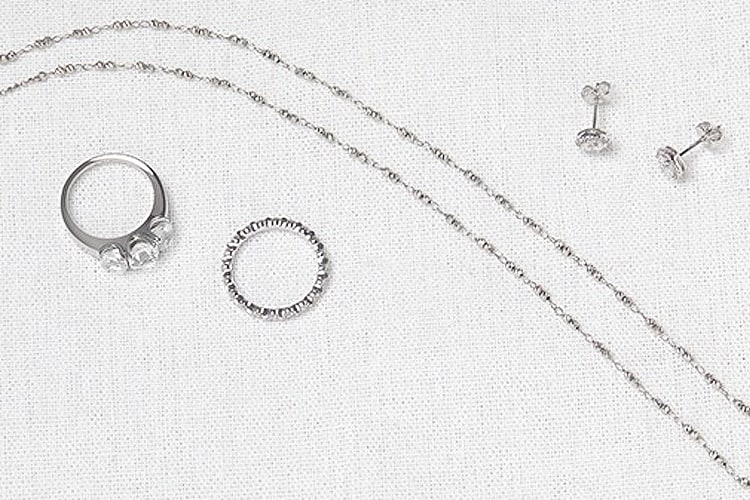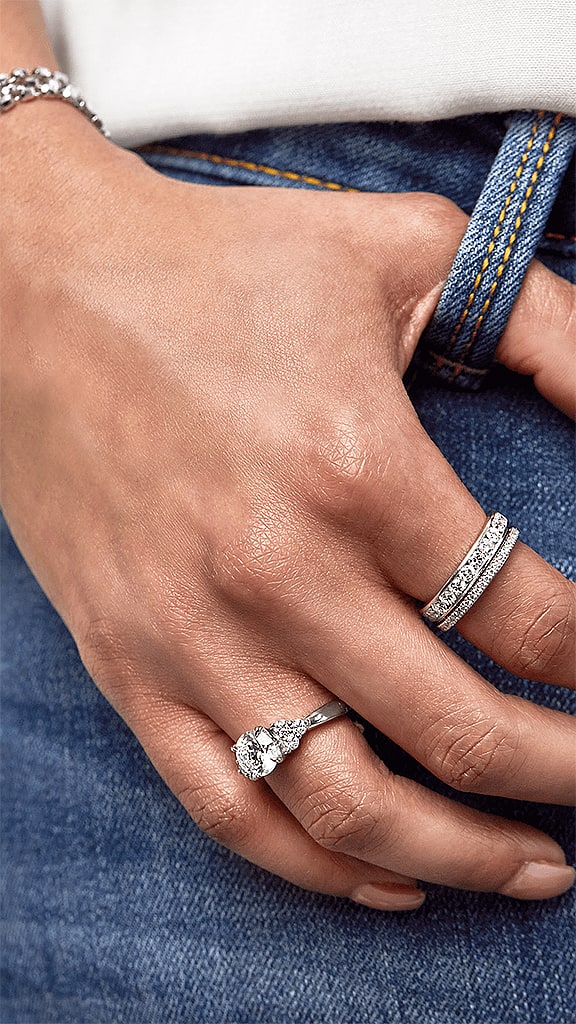Five Platinum Myths Debunked

Purchasing jewelry is an incredibly sentimental experience. When it comes to selecting the perfect engagement ring, wedding band or even fashion jewelry, there are many things to consider — including the metal. There is a reason why platinum is regarded as the industry standard for relationship jewelry. Despite platinum’s quality and reputation, there are still common myths when shopping for jewelry, so it’s time to set the record straight!
Myth: Platinum is softer than gold.
Platinum is known for its durability. While most precious metals are soft in their raw state, it is important to note that hardness does not necessarily mean durability. Platinum is considerably denser than gold and much more durable. In fact, platinum is one of the longest lasting natural materials on earth. It is known to be the best choice for milestone jewelry like engagement rings and wedding bands, because it holds precious gemstones in place more securely than other metals — all while making the gemstone appear even more brilliant. Platinum symbolizes your everlasting love and bond that will endure for years to come.
Myth: White gold and platinum are interchangeable.
At first glance, white gold and platinum may look similar. However, this is a common misconception and, of these two, platinum is the only true-white metal. In reality, gold’s natural state is yellow so there is no such thing as “white gold.” White gold is an alloy created by mixing yellow gold with white metals before being coated with rhodium, a transition metal in the platinum group. Eventually, the rhodium coating fades away, and the white gold will start to yellow over time. Platinum is pure and naturally white, ensuring its color will never fade, while white gold will need to be replated over time in order to maintain its white-metal color. As an added benefit, because of its purity, platinum is also hypoallergenic!
Myth: Platinum scratches more than other metals.
Precious metals are not immune to scratches and wear over time. However, platinum is extremely durable and wears down at a much slower rate than other metals. When gold is scratched, tiny, microscopic pieces of metal flake away, leading to costly maintenance needs and possibly replacement. When platinum is scratched, the metal is not lost, it just moves aside – like running your finger across a stick of butter. Over the course of 10 years of wear, once maintenance costs are factored in, a white gold ring could end up costing 2.5 times more than a platinum ring. Even if a platinum ring may cost more up front, it delivers better value over time.
Myth: Platinum ages poorly.
The tell-tale sign of a well-loved platinum piece is a patina — a satiny finish on the surface of the piece that has been developed over years of wear. The patina is regarded as a badge of honor in the jewelry world, and is celebrated by designers and collectors alike as it represents the metal’s true authenticity. If you prefer a more luminous luster, platinum jewelry can be polished to return to its original shine. Platinum truly ages with grace, allowing it to be passed down from generation to generation.
Myth: Platinum is too expensive.
Many people question why platinum is typically more expensive than gold. For one, platinum is a denser metal, it’s actually 60% heavier than 14kt. white gold. Purity also plays a role in price. With platinum jewelry typically being 95% platinum, and white gold being 58.5% (14kt.) or 75% gold (18k), less precious metal is required when making a white gold piece. While a platinum ring may come with a slightly higher price tag, its value only appreciates in time, especially when considering the maintenance costs associated with other metals.

Source: Platinum Guild